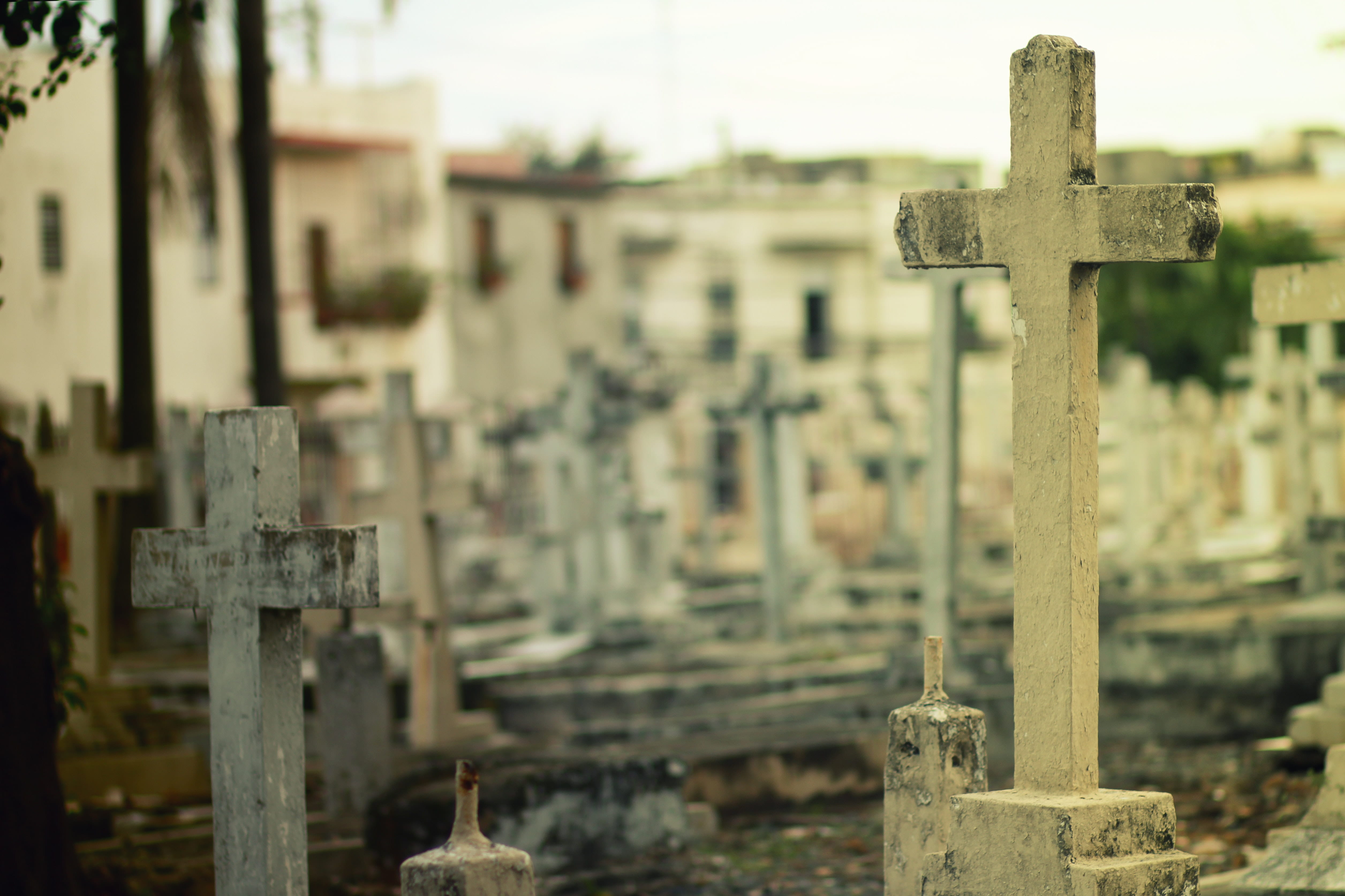
OPEN CALL: Art, Death and Disposal
During a time of rapid change and global crisis, the interdisciplinary DeathTech team at the University of Melbourne is researching the intersection of death, technology and society. We are exploring practices used to dispose of the deceased, from burial and cremation to newly emerging techniques and designs for the treatment of the dead, for example high-rise cemeteries, water cremation and body composting.
We invite up to five artists to join this collaborative research project, to produce innovative new work on death and disposal for exhibition in Melbourne in July 2021. Specifically, work is invited that responds to our central question:
How might disposal of the deceased be designed in the 21st century?
Works in any media are encouraged, including digital video and/or photography, sculpture, textiles, drawing, and installation.
Up to five artists will each receive an award of $2,000 AUD. Their work will feature in a dedicated exhibition and catalogue. Their work will be selected by a panel comprising:
- Simone Slee, Victorian College of the Arts, University of Melbourne;
- Edward Colless, Victorian College of the Arts, University of Melbourne, and Editor Art + Australia;
- Elizabeth Hallam, University of Oxford;
- Tamara Kohn, University of Melbourne,
- Michael Arnold, University of Melbourne.
Applications should be submitted by 31 July 2020, 12 midnight [AEST]
Further information
Artists are invited to produce new work in collaboration with the DeathTech’s research project Disposal of the dead: beyond burial and cremation.
This research – ever more pressing at the current time of unprecedented global challenge with the effects of Covid-19 – focuses on emerging technologies of disposal in the context of social, cultural and environmental issues, institutional responses, public discourses, personal ethics, and worldviews. It explores innovations in body disposal technologies, their potentials and limitations, and their wider socio-cultural impacts, from the perspectives of designers, death workers and their industries, and wider cultural and religious communities. To see more about this research please see the link provided below.
The DeathTech team invites applications from artists to create work that is integral to this project, its key themes and concerns; the artists’ work will inform the research, as will public responses to the exhibition. The aim is for artists to engage with the team’s research, and produce work that explores significant aspects of death and the technologies that surround bodies of the deceased.
So we invite artists to respond to the question: How might disposal of the deceased be designed in the 21st century?
Art works might, for example, address issues of design, sensory experience, social response, and memory-making in relation to burial, cremation, and/or emerging and future alternatives to these practices.
Five artists or artists’ collectives will be selected through this open call. We encourage proposals that are experimental, and are excited to work with artists in any area of practice including design, research-based artwork, and public art. The successful artists will:
- work collaboratively with the DeathTech team
- create work that can be displayed effectively at the project’s exhibition venue; each artist will have exhibition space of up to approx. 18m x 4m wall space or 66 meter square floor space (to be confirmed during the development of the exhibition: works need to be responsive to the site)
- have their work featured in the exhibition’s dedicated catalogue
- have the opportunity to offer their work for sale at the exhibition
- be invited to participate in associated events at the exhibition
Proposals in any media will be considered including: digital video and/or photography, work that can be projected and/or suspended, sculpture, drawing, and interactive installation. As the artists appointed will collaborate with the DeathTech team, and make work that is responsive to the possibilities and constraints of the exhibition venue, artists should be based in, or temporarily residing in Melbourne.
For further information please contact Prof Michael Arnold (mvarnold@unimelb.edu.au) and Dr Elizabeth Hallam (elizabeth.hallam@anthro.ox.ac.uk)
Proposals should include:
- A description of the proposed work (max. 1000 words, PDF), including indication of how it responds to the research question: How might disposal of the deceased be designed in the 21st century?
- Ten images to support the proposal. These can be a combination of images of existing works or proposals for new works (individually saved at 72-dpi; max. 30 x 30cm, JPEG or PDF). Artists working in video formats should also send examples, up to five minutes of video (max. of 50MB combined attachments or a link to a YouTube or Vimeo account).
- A current CV (max. 3 pages, PDF)
Please ensure that all of the files you send have a file name using the artist’s name.
Proposals should be emailed as a compressed or archived file (ZIP) to Prof Michael Arnold (mvarnold@unimelb.edu.au) and Dr Elizabeth Hallam (elizabeth.hallam@anthro.ox.ac.uk)
Key dates:
- Applications open: 20 June 2020
- Applications close: 31 July 2020, 12 midnight [AEST]
- Applicants will be informed of interview dates in July and the outcome of their application by 31 August 2020.
Categories